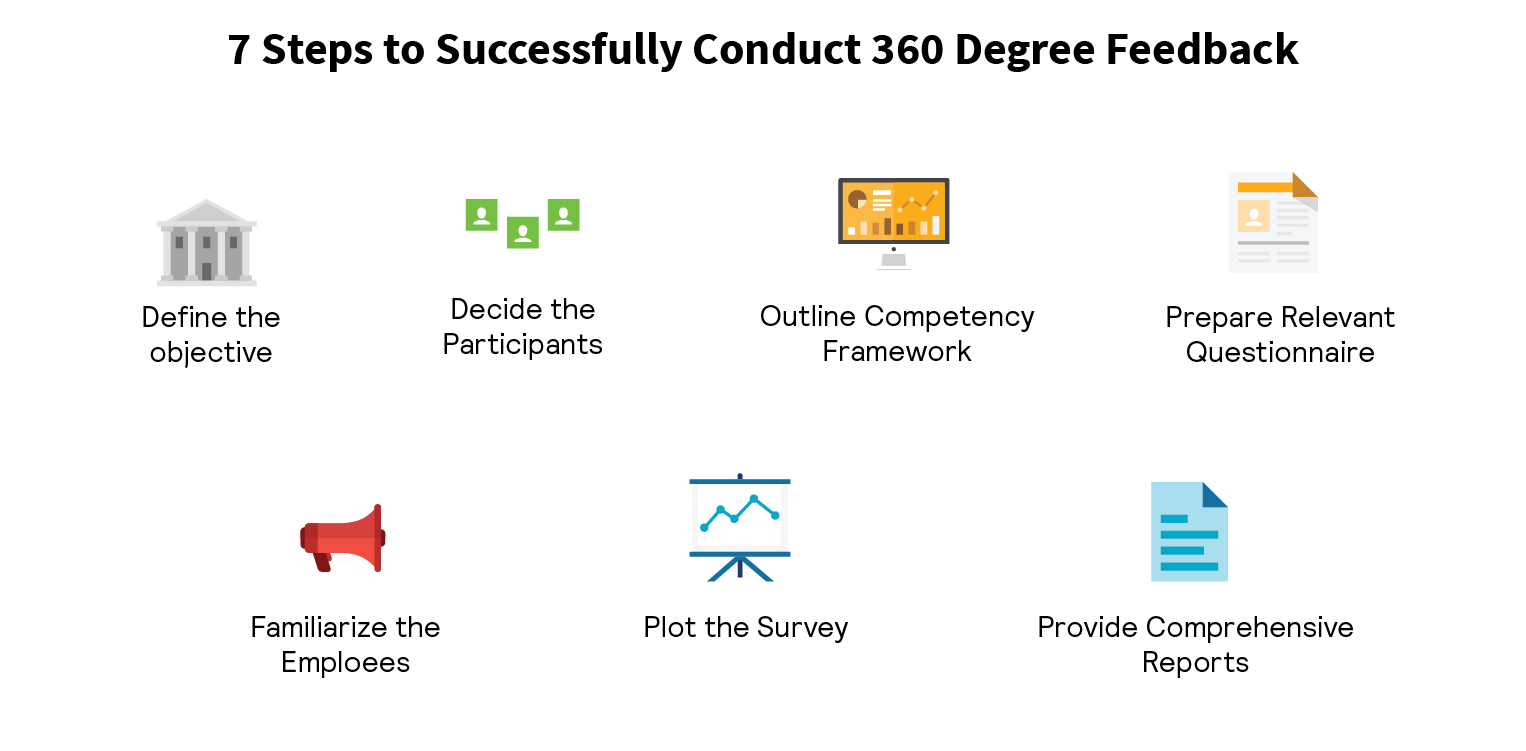User interphase of the platform is what the creates first impression on the survey participants. A good 360 degree performance appraisal questionnaire does not look cluttered, rather neat and simple to understand. The easy navigability removes the scope of pending support requests or delays. It gives you a holistic view of the number of participants, status and progress of the survey.
How Mercer | Mettl Can Help?
Mercer | Mettl has a one-stop solution for all your 360 degree performance evaluation needs. It offers 3 effective tools to evaluate employee’s potential and abilities. Mentioned below are the benefits of 360 degree feedback system:
Objectives of 360 Degree Performance Appraisal
Performance Appraisal
The evaluation tool provides you overall employees’ perspective in the form of a seamless platform, intuitive reports, and customizable surveys.
- Seamless Platform: Eliminates operational hassles from the 360 degree feedback process by the quick set-up, effortless administration, and automated reminders.
- Intuitive Reports: Mercer | Mettl helps in preparing beautiful reports and dashboards with clear and actionable information. It consists of comprehensive feedback reports, group reports, and easy-to-understand dashboards.
- Customizable Survey: It helps you customize questions to competencies to reports. Mercer | Mettl will help you build custom questionnaires, an exhaustive competency library, and multiple question types.
You can visit the link for more details on Performance Appraisal.
Training Needs Identification
The assessment tool helps in identifying gaps in the behavioral traits of an employee as perceived by other stakeholders.
It Is Divided into 3 Pillars:
Why to Train
Mercer | Mettl identifies and develop key competencies in employees to achieve business goals
Who to Train
It helps in identifying the skill gap for each employee based on the competency levels
What to Train
It helps in designing a customized training plan based on individual skill gaps and training needs
Apart from that Mercer | Mettl helps you in curating the right training program for your organization. It is divided into 3 parts:
Skill-based: It helps in identifying employee’s unique skill sets required to succeed in every job role and function.
Behavior-based: It identifies behavioral gaps that needs to be worked upon employees. They are basically the dominant predictor for most roles.
Future-Proofing: It augments the learning agility within the organization by identifying upcoming skills to develop in the workforce.
For more details on this, visit the link.
Succession Planning
This tool understands behavioral dynamics observed on-the-job and improves the developmental steps.
Mercer | Mettl can help you plan Succession Planning in the following way:
- Identify: It defines key competencies required to succeed in critical roles and nominate candidates.
- Assess: Valid and reliable tools such as Psychometric, Aptitude Assessment, Assessment and Development Centers, and 360 Degree Performance Evaluation is used to assess candidate readiness on key competencies.
- Plan: Customized reports are used to shortlist the suitable candidates for succession.
- Act: There is a check on the growth of selected candidates.



























Would you like to comment?